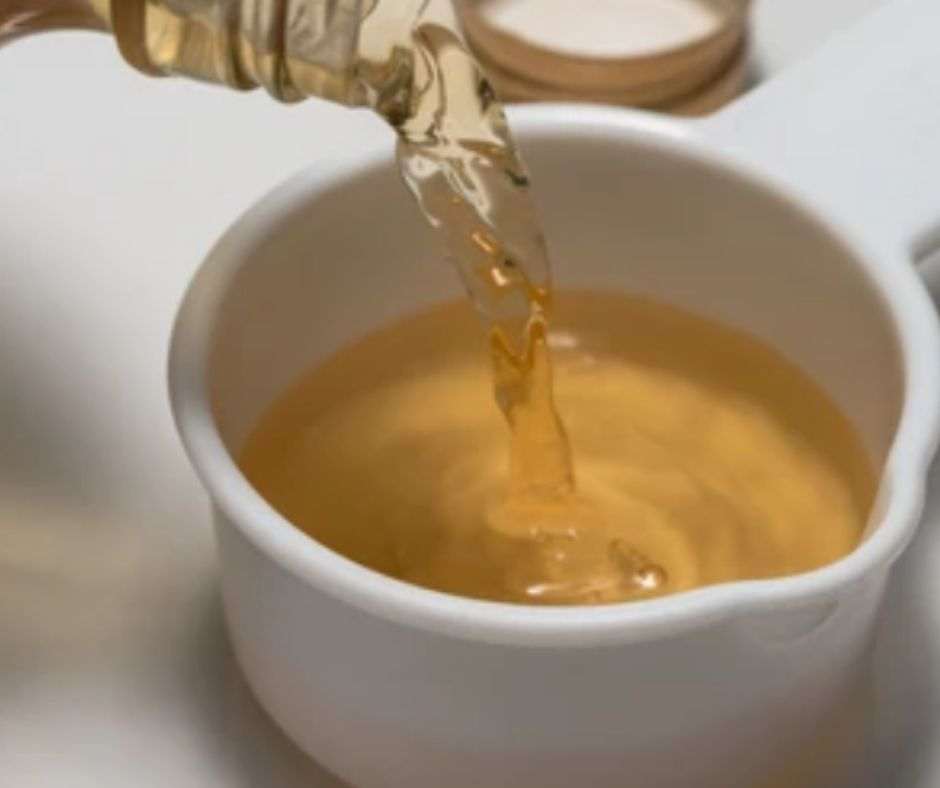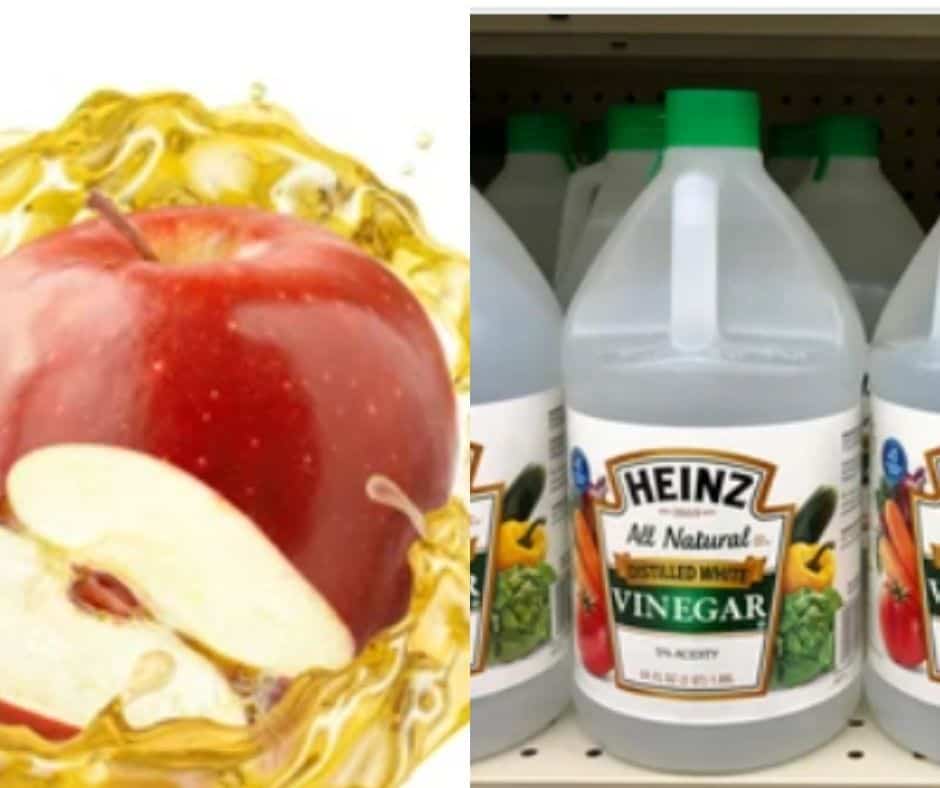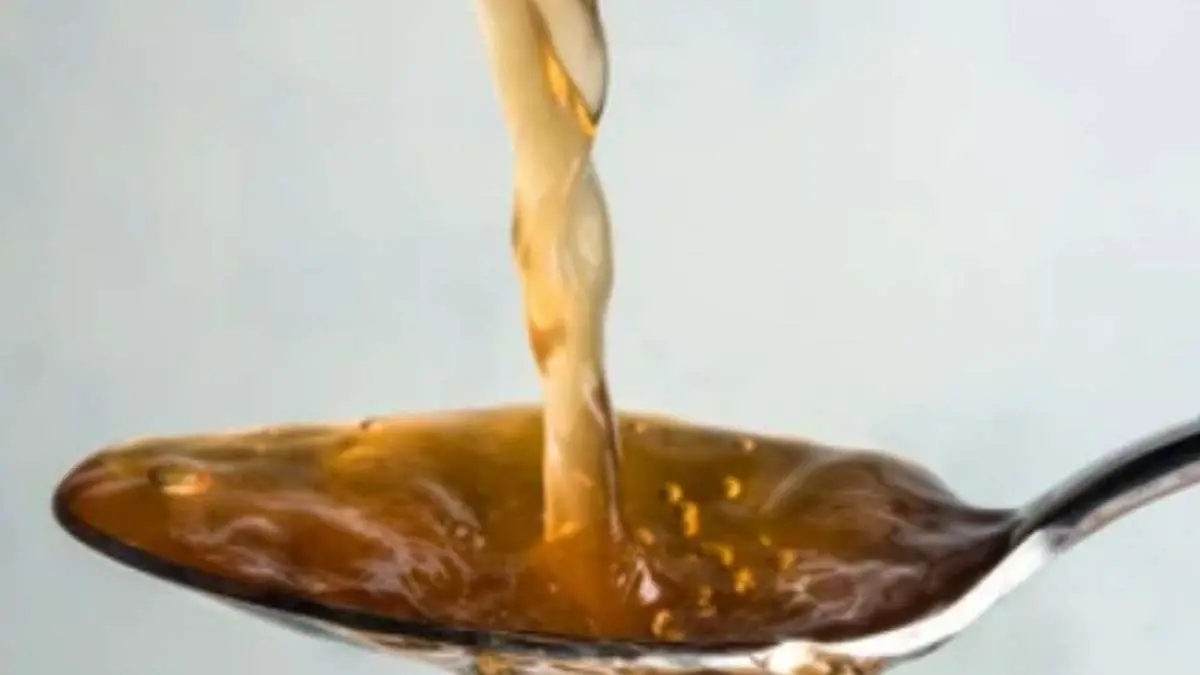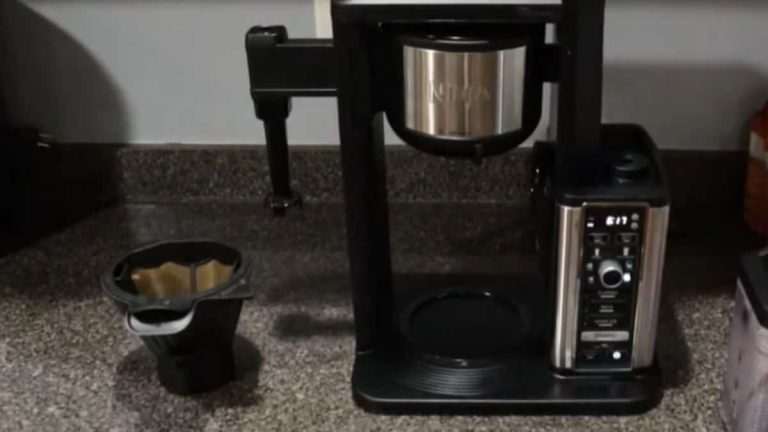How to clean coffee maker with apple cider vinegar?
Coffee is pretty much the best thing in the world. When you love something as much as love coffee, it starts to show on your countertops, on your carpets, and even in your teeth. Unfortunately, those stains can be a huge pain to get rid of. How to clean coffee maker with apple cider vinegar?
Introduction
Table of Contents
Alternative cleaning products, such as vinegar are becoming increasingly popular. It’s advertised as an environmentally friendly tool that can help you clean your house without using harsh chemicals. Nevertheless, cleaning coffee makers is one of the most common uses for vinegar. A strong smell of coffee can sometimes be difficult to get rid of with normal cleaning methods, but using apple cider vinegar can help you clean your coffee maker in no time at all.
Coffee makers are one of the most often used kitchen gadgets today. When well-maintained and cleaned properly, these machines can last for a long time and make great quality coffee. However, it’s not uncommon to have mold and bacteria formation in your coffee maker after months or years of usage. If you have used your coffee pot for months and not cleaned it thoroughly, there might be unpleasant smells emanating from it due to improper cleaning. This can make you stop using the machine, but this doesn’t have to be the case anymore! There is an easy way to do a complete cleanup of your coffee maker that will leave it smelling like new and ready for use again.
Can I use apple cider vinegar instead of white vinegar in cleaning?

Vinegar is a natural, low-cost substitute for harsh commercial cleaners. Apple cider vinegar has the same health advantages as white vinegar but has a more pleasant aroma. Both have a comparable acidity level and can clean and disinfect everything from floors to drains throughout the house. Cleaning with apple cider vinegar is a harmless, biodegradable option.
There is a lot of conflicting advice out there about which kind of vinegar to use for cleaning. Some people swear by the smell of white vinegar, while others prefer the faint sweetness of apple cinnamon. I’ve researched and tested them both to give you some definitive answers.
Is apple cider or white vinegar better for cleaning?
The fundamental distinction between the two kinds of vinegar is their origin. According to Harris, apple cider vinegar is manufactured by crushing apples, extracting the juice, and fermenting it in two steps.
Distilled white vinegar is manufactured by oxidizing grain alcohol (similar to vodka) to produce acetic acid and microbial growth. It’s colorless, unlike ACV, and it’s also more powerful than ACV.
What are the benefits of cleaning your coffee maker?

Cleaning your coffee machine should be a top priority for a variety of reasons. To begin with, a coffee machine contains some of the highest levels of bacteria in your kitchen. Heat, organic matter (coffee), and water combine to provide ideal breeding habitat for bacteria and mold. Drinking coffee from a soiled coffee maker is unhealthy and unsanitary.
To eliminate built-up oils, grinds, and grime, clean your coffee maker with apple cider vinegar. This will improve not just the performance of your coffee machine, but also the flavor of your coffee. Additionally, your coffee maker will have a cleaner flow, ensuring that no coffee grounds are wasted.
Cleaning your coffee maker is just as vital as cleaning any other element of your kitchen, both for your health and the efficiency of your coffee maker.
What’s the difference between apple cider vinegar and white distilled vinegar?

For ages, vinegar has been used for cleaning & hygiene purposes. It is from the natural fermenting process of fungi (yeast) and sugar or starch. Apple cider and white vinegar are made from different products: Apple cider vinegar is manufactured from fermented apple juice, while white vinegar is made from fermented grain. Apple cider vinegar has a less distilled taste than white vinegar. It is also more potent and richer in nutrients.
On the other hand, it leaves an odor after use, unlike white vinegar, which can be smelled only otherwise. ——- Both are acidic, but their pH levels differ. While white vinegar’s pH level is between 2-3, apple cider vinegar’s pH level falls around 3.7–4.6. The latter is said to be more alkaline than white vinegar. This means it can tackle slightly stronger cleaning jobs as compared to the former one.
Apple cider vinegar is a safe cleaning solution that successfully eliminates grime, mineral deposits, and bacteria from surfaces. Though not as powerful as chlorine bleach, apple cider vinegar’s gentle acidic qualities operate to kill bacteria at the cellular level. Acetic acid, the active cleaning ingredient in vinegar, is harmless for most surfaces but can dull some finishes on wood or no-wax floors and create etching in softer stone counter and floor surfaces. Surfaces can be safely cleaned using a diluted 1 cup apple cider vinegar solution to 1-gallon water, with no risk of clouding or etching.
Apple cider vinegar is a non-toxic cleaning agent that effectively removes surfaces’ dirt, mineral deposits, and bacteria. Apple cider vinegar’s moderate acidic characteristics kill bacteria at the cellular level, but are not as effective as chlorine bleach. The key cleaning element in vinegar, acetic acid, is safe for most surfaces but can dull some finishes on wood or no-wax floors and cause etching in softer stone counter and floor surfaces. Surfaces can be safely cleaned using a diluted solution of 1 cup apple cider vinegar to 1-gallon water, with no risk of clouding or etching.
Mix equal amounts of apple cider vinegar and water to clean bathroom counters, cabinets, sinks, and most surfaces. Use 1/2 cup baking soda, a cup of apple cider vinegar, and 1 cup of hot water down the bathroom drain to keep it fresh and clean. Allow 10 minutes before flushing with hot water. To eliminate soap scum from showers and tubs, use full-strength apple cider vinegar. Apple cider vinegar’s acidity aids in the removal of mineral deposits and another buildup without emitting chemical smells or leaving a residue to be wiped away.
To clean windows without streaks, mix 50/50 water, and apple cider vinegar. On painted surfaces like walls and cabinetry, the same mixture can be used to clean, remove stains, and eliminate odors when one cup of apple cider vinegar is added to a load of washing, both the laundry and the washer smell better. Cleaning with apple cider vinegar reduces odors and eliminates mold and mildew on any surface. When apple cider vinegar is wet, it has a powerful odor, but it has a gentle, sweet aroma as it dries.
White Vinegar
White vinegar, commonly referred to as distilled vinegar or spirit vinegar, is a distilled vinegar. It is clear or white, unlike apple cider vinegar, which is brown. It comprises approximately 4-7 percent acetic acid and 96 percent water. White vinegar has a strong, sour smell and is made from grain alcohol fermentation.
This vinegar is excellent for pickling vegetables, baking, and various other cooking methods. White vinegar can be used as a cleanser and disinfectant because it has antibacterial characteristics. There are several things you should never clean with apple cider vinegar owing to an acid issue.
There isn’t much difference between cleaning with apple cider vinegar and cleaning with white vinegar. Just take care not to use them on surfaces that aren’t compatible with them.
Apple Cider Vinegar
Apple Cider Vinegar is a vinegar made from apples.
Consider a brown, murky liquid if you don’t know what apple cider vinegar is. It contains roughly 6% acetic acid and 94-95 percent water. The name comes from the fact that crushed apples are usually used to make this vinegar. The liquid is extracted, and the fermented apple cider must undergo a two-step fermentation process.
Apple cider vinegar isn’t just fantastic for cleaning carpets at home; it’s also great for cooking. Dressings, vinaigrettes, and marinades can all be made using it. It’s higher in nutrients than white vinegar and can help with weight loss, dandruff, heart problems, and various other conditions.
When cleaning with apple cider vinegar vs white vinegar, there are a few things to consider. Always dilute with water, just like apple cider vinegar. Because it is highly acidic, failure to do so will surface damage. Cleaning the house with this device should be a breeze.
The culinary, medicinal, and cleansing benefits of apple cider vinegar and white vinegar are unrivaled. Whether you need to clean carpets, appliances, windows, floors, or a variety of other surfaces, there are a few measures to follow.
What you will require:
- Spray bottle with no contents
- 1/3 cup white vinegar/apple cider vinegar
- Water
- Rag
Procedure:
Fill an empty spray bottle with apple cider vinegar, about a third of the way full.
Fill the container halfway with water.
Close the cover with a screw.
Spray the solution on the afflicted areas.
Using a cloth, wipe away any excess moisture. When cleaning with white vinegar, use the same steps.
Pour the vinegar through the coffee machine’s filter. Although apple cider vinegar and white vinegar have different scents, they both have a cleansing effect. Vinegar can be used to clean toilets as well. All you have to do is cover it in vinegar and soak it overnight. In the morning, clean the toilet using a toilet brush.
Simply pour a small amount of vinegar into the dishwasher to remove germ buildup. White vinegar isn’t really helpful in this situation. Instead, use apple cider vinegar. Use a sprayer to liberally disperse the liquid when cleaning windows. Because apple cider has a more pleasant aroma than white vinegar, it is a better choice for cleaning windows, floors, and walls.
It has to be easy to clean using apple cider vinegar vs white vinegar.
The Differences Between Apple Cider and White Vinegar
- Nutritional Information
White vinegar has fewer vitamins and minerals than apple cider vinegar. A tablespoon of any of them, on the other hand, contains roughly three calories. This indicates that you’ll need almost a cup to receive a considerable amount of nutrition.
- Health Advantages
Apple cider vinegar is well-known for its ability to delay stomach emptying, helping you feel fuller for longer. On the other hand, distilled vinegar is excellent for diabetes management and obesity due to its acetic acid concentration.
While white vinegar is widely recognized as a natural disinfectant, many cleaning aficionados ask if apple cider vinegar can be substituted. One reason this arises is that some swear by the notion that it’s healthier for you to drink apple cider vinegar than use it in your cleaning routine. However, according to experts, the only real difference between the two types of vinegar is taste and color.
Can I clean with apple cider vinegar?
White vinegar is a multipurpose cleanser that may be used for a range of cleaning jobs. This makes it a great alternative over some of the other chemicals you may have been using in the past. However, some people prefer to use apple cider vinegar or ACV instead of white vinegar. This is because ACV has additional properties thanks to its apple origins. However, others believe the smell of ACV makes it unpleasant to use as well as the fact it’s not as effective as plain white vinegar at cleaning.
Apple cider and white vinegar are two of the most common types of vinegar. Whereas Apple cider vinegar is made from crushed and fermented apples, white vinegar is made from distilled cane or beet sugar. Both types have been used as cleaning agents in households around the world since time immemorial. Some people continue to use these compounds as cleansers and disinfectants today. In case you’re wondering, apple cider vinegar can be used instead of white vinegar for cleaning. Before employing one of them, you should think about a few things.
How to make Apple Cider Vinegar
Apple cider vinegar is made with apples, sugar, and yeast. The fermentation process is started by crushing the apples and mixing them with sugar and yeast. After that, the apple cider vinegar goes through two stages of fermentation: alcoholic fermentation and acidic fermentation.
Alcoholic fermentation occurs first: yeast germs feed on the broken apples and the sugar (in carbs) they contain, turning them into alcohol.
After that, the acidic fermentation process begins. Acetobacter bacteria infiltrate the liquid and feed on the leftover sugars in the alcohol, turning it into vinegar. They can be found almost anyplace.
Bacteria like yeast and acetobacter enjoy sugar as much as — if not more than — you and me.
How to make White Vinegar
The most acidic and violent vinegar is white vinegar. It has a transparent hue and contains anything from 5% acetic acid for pickling and cooking to 10% acetic acid for cleaning windows and removing stains from textiles, depending on the application.
White vinegar is also generated through a natural fermentation process. Sugar beets, potatoes, molasses, whey, and any other sweet or starchy fruit or vegetable abundantly available in their area of the world were used to make white vinegar in the past.
White vinegar is now primarily derived from grain. Grain is blended with sugar and yeast, which causes alcoholic fermentation. Grain alcohol, often known as ethanol, is produced as a result of this process (which vodka is made of).
Conclusion
There is no need to be perplexed. Keep in mind that each of them can be utilized to clean. However, white vinegar is frequently used for cleaning, but apple cider vinegar is better for building a healthy lifestyle.
The coffee oils and the vinegar fight for space with the coffee in the machine. It’s not a face-off you want to see, as there’s no clear winner. After half a day of these two battling it out, the vinegar leaves, and it smells like a nice apple pie. You can verify this by turning up your nose when you pour yourself some freshly brewed coffee.
Coffee makers can be expensive to replace, but cleaning them doesn’t have to cost you anything beyond time. This DIY method uses products you likely already have on hand, and all it takes is about five minutes of grinding, brewing, and rinsing. So grab a mug, fill it with your favorite brew, and get ready to clean your coffee maker!
Coffee maker cleaning doesn’t have to be a long and tedious process. You don’t need a large amount of time or amass various supplies to keep your coffee maker in great condition. Simply place vinegar in the tank and run it through a cycle as you normally would using tap water. This is an easy solution that doesn’t require a lot of hassle, but it can save you from the trouble of having to replace your coffee maker prematurely because it has become so disgusting. Aside from keeping your coffee maker clean and sanitary, this trick can also make the taste of your coffee more pleasant!







